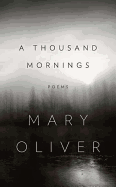Lost and Found: Trends in Book Discovery
 The problem of discovery in the digital age was a major theme of the Publishers Launch conference yesterday in Frankfurt and, in one presentation, Peter Hildick-Smith, founder and president of Codex Group, focused on how fewer bookstores and the rising popularity of tablets over e-reading devices affect how people learn about books and how they buy and read them.
The problem of discovery in the digital age was a major theme of the Publishers Launch conference yesterday in Frankfurt and, in one presentation, Peter Hildick-Smith, founder and president of Codex Group, focused on how fewer bookstores and the rising popularity of tablets over e-reading devices affect how people learn about books and how they buy and read them.
After conducting more than 250,000 interviews about reading behavior since 2004, Codex has found that a major shift has taken place in discovery in the past two years, as digital books have become a significant part of the book world.
Two years ago, 35% of book purchases were made because readers found out about a book in bricks-and-mortar bookstores, the single-largest site of discovery. This year, that figure has dropped to 17%, a reflection both of the closing of Borders and the rise of e-readers. In the same period, personal recommendations grew the most, to 22% from 14%. Some three-quarters of personal recommendations are made in person, while the rest come by e-mail (8%), phone (7%), Facebook (4%) and other social networks (3%).
A problem for publishers and authors of new titles is that the vast majority of personal recommendations are backlist titles. Only 6% of books recommended personally have been published in the past half year--and just 2% were published within three months. Also, personal recommendations are a part of what Hildick-Smith called "random discovery," a dynamic that does not lend itself to easy influence by publishers, booksellers and authors. Surprisingly, considering all the attention it's gotten, digital mass media, including Facebook and Twitter, rose just to 4.5% from 1.9% as a place people learned about the books they have bought. And the online channel represents 9% of discovery, which Hildick-Smith called "way underperforming" in light of the amount of purchases made online. In part, this is because many readers search for books online knowing what they want. (By contrast, readers tend to go into bookstores with an "open mind.") The result, Hildick-Smith said, is that many books "get lost in the long tail." Amazon, for example, has 32 million book offerings.
Surprisingly, considering all the attention it's gotten, digital mass media, including Facebook and Twitter, rose just to 4.5% from 1.9% as a place people learned about the books they have bought. And the online channel represents 9% of discovery, which Hildick-Smith called "way underperforming" in light of the amount of purchases made online. In part, this is because many readers search for books online knowing what they want. (By contrast, readers tend to go into bookstores with an "open mind.") The result, Hildick-Smith said, is that many books "get lost in the long tail." Amazon, for example, has 32 million book offerings.
The growth in popularity of tablets, which are now much more prevalent than dedicated e-reading devices, has also changed reading habits. Tablet owners read on average two hours a week on their tablets while e-reader owners read more than four hours a week on their e-readers. Tablet owners buy fewer books than e-reader owners. The tendency is attributable to tablets' many distractions, particularly surfing the Internet and e-mail, which were the two most popular uses for tablets, following by reading books, gaming and using apps.
This year, some 43% of frequent book buyers now own tablets, up from 17% last year. At the same time, just 33% of frequent book buyers own dedicated e-reading devices, up from 21%.
Despite the growth of tablets and e-readers, as far as book format goes, it's a "hybrid world," Hildick-Smith said. In May, 41% of respondents read print only and 2% read digital only while 57% read books in both print and digital form.



SHELFAWARENESS.1222.S1.BESTADSWEBINAR.gif)


SHELFAWARENESS.1222.T1.BESTADSWEBINAR.gif)
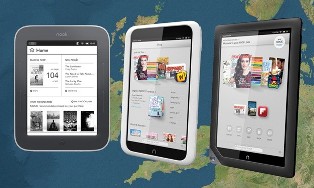 A trio of Barnes & Noble executives expressed confidence that the basic strategies they have been using to sell the Nook and e-books in the U.S.--relying in part on a bricks-and-mortar presence, emphasizing a range of content in many languages, promoting high-quality publications and stressing shared family reading experiences--will translate well into other countries. In addition, the new partnership with Microsoft is expected to open the company to many new markets.
A trio of Barnes & Noble executives expressed confidence that the basic strategies they have been using to sell the Nook and e-books in the U.S.--relying in part on a bricks-and-mortar presence, emphasizing a range of content in many languages, promoting high-quality publications and stressing shared family reading experiences--will translate well into other countries. In addition, the new partnership with Microsoft is expected to open the company to many new markets. American billionaire Leon Black, CEO of Apollo Global Management and "a well-known art collector,"
American billionaire Leon Black, CEO of Apollo Global Management and "a well-known art collector," 

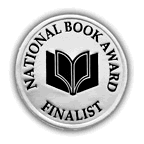 In a nice first, the 20 finalists for the 2012 National Book Awards will be announced on television--on MSNBC's Morning Joe tomorrow, between 6-9 a.m. Eastern. National Book Foundation chairman David Steinberger, whose day job is president and CEO of Perseus Books Group, will be a guest on the show.
In a nice first, the 20 finalists for the 2012 National Book Awards will be announced on television--on MSNBC's Morning Joe tomorrow, between 6-9 a.m. Eastern. National Book Foundation chairman David Steinberger, whose day job is president and CEO of Perseus Books Group, will be a guest on the show.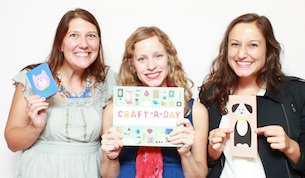 Last Wednesday, Pins and Needles, a small crafting shop in New York City, hosted a launch event for Craft-a-Day by Sarah Goldschadt (Quirk Books). Attendees tried making one of the many crafts from the book and had their photos taken in a photo booth set up in the shop just for the event. The author (center) taught the basics of crafting and signed copies of her book.
Last Wednesday, Pins and Needles, a small crafting shop in New York City, hosted a launch event for Craft-a-Day by Sarah Goldschadt (Quirk Books). Attendees tried making one of the many crafts from the book and had their photos taken in a photo booth set up in the shop just for the event. The author (center) taught the basics of crafting and signed copies of her book. Safe as Houses
Safe as Houses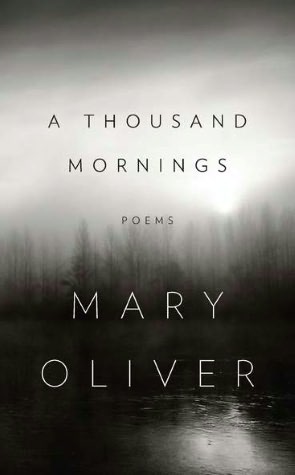 If you're one of the many, many fans of National Book Award- and Pulitzer-winning poet Mary Oliver, you'll very much welcome A Thousand Mornings. When Oliver was a teenager, she lived in the upstate New York home of Edna St. Vincent Millay; Millay's lyrical poetry may have worked its magic on Oliver. Where Millay's love of nature was inspired by Maine's Penobscot Bay, though, Oliver's lyricism rises out of the waters of her beloved Provincetown.
If you're one of the many, many fans of National Book Award- and Pulitzer-winning poet Mary Oliver, you'll very much welcome A Thousand Mornings. When Oliver was a teenager, she lived in the upstate New York home of Edna St. Vincent Millay; Millay's lyrical poetry may have worked its magic on Oliver. Where Millay's love of nature was inspired by Maine's Penobscot Bay, though, Oliver's lyricism rises out of the waters of her beloved Provincetown.